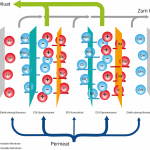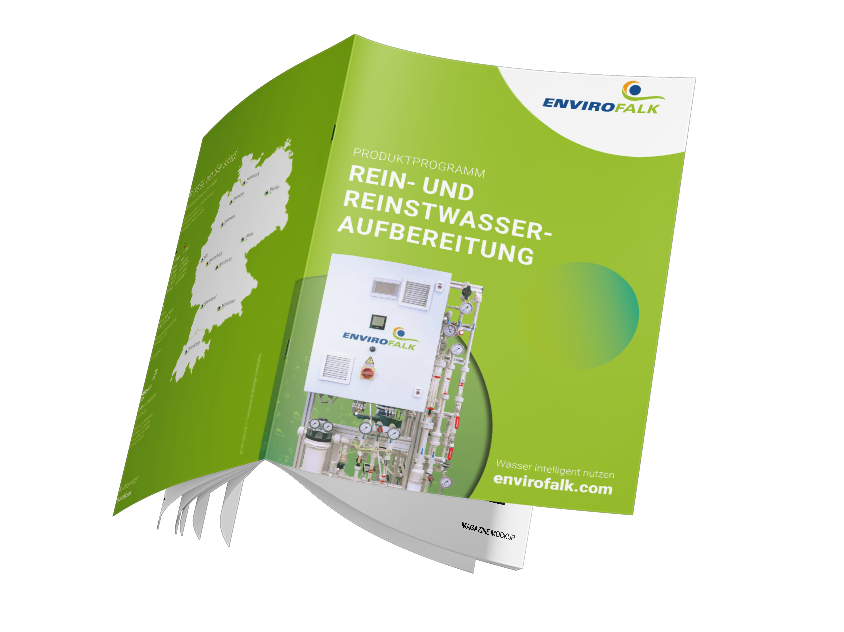Electrodeionization (EDI) is a technology in which ion exchange resins and ion-selective membranes are combined with direct electric current to remove ions from the water. It was a revolutionary idea that the ion exchanger could be regenerated not only with acid and alkali, but also with an electric field, and laid the foundation for the development of modern electrodeionization processes.
The process: An EDI module consists of several chambers that are separated from each other by ion-selective membranes. The chambers are filled with ion exchange resins and arranged between two DC electrodes. The applied DC voltage deflects the ions of the EDI feed water towards the respective electrode: cations move towards the cathode and anions towards the anode. Due to the opposing arrangement of the ion-selective membranes, the ions are collected in channels between the chambers and discharged from the module via a partial flow, the EDI concentrate. EnviroFALK uses electrodeionization after reverse osmosis. The desalinated water is treated again. The water quality is characterized by low electrical conductivity and low silicic acid values.


